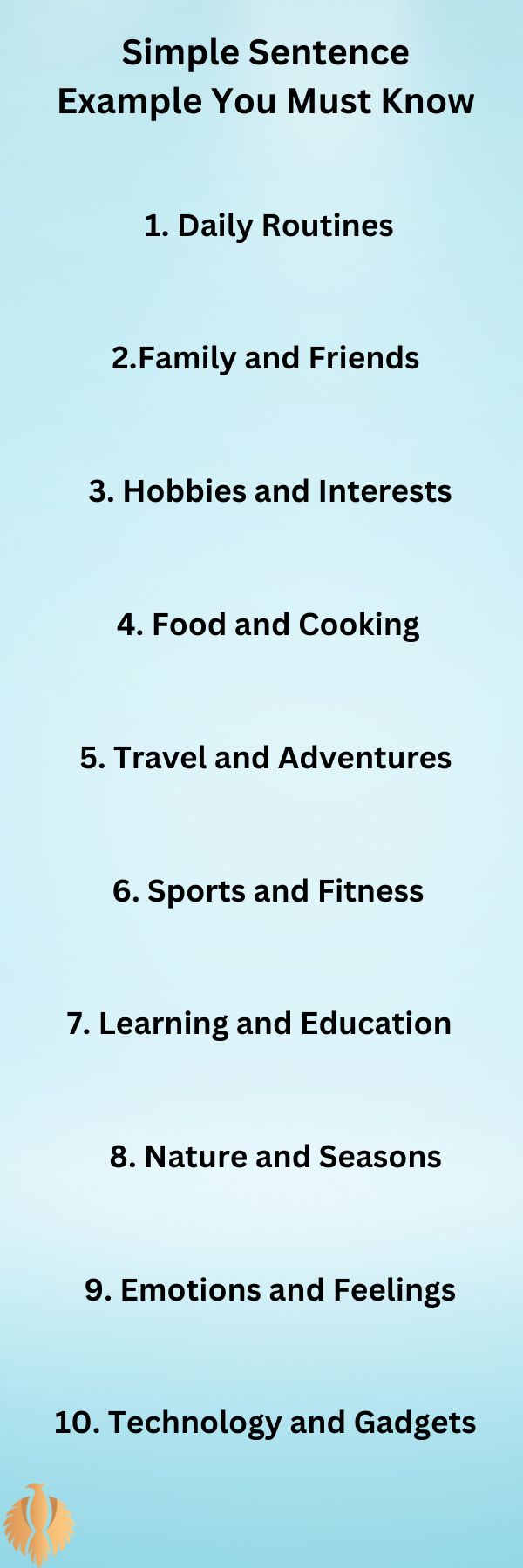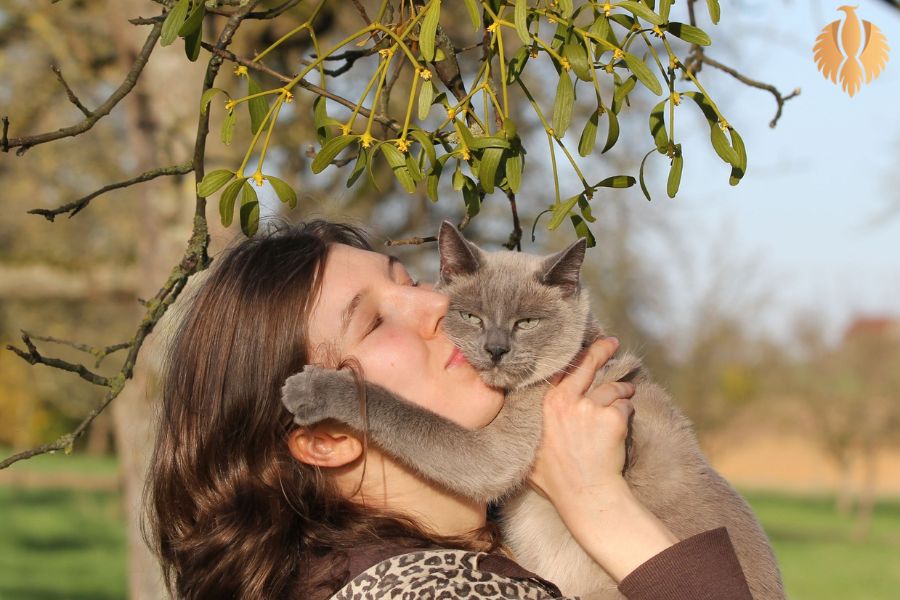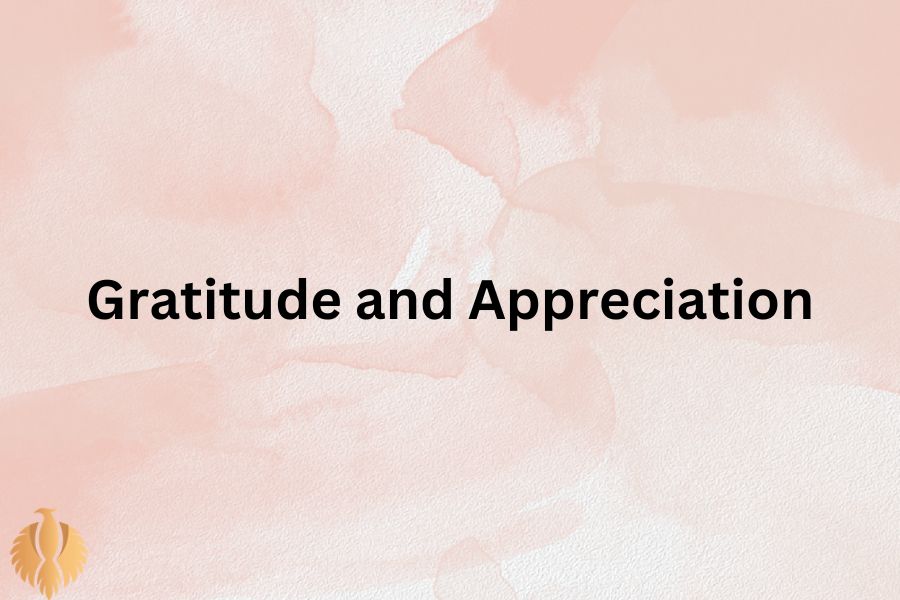# Top 100 Simple Sentence Examples You Must Know! ✨
As an English teacher, I always emphasize the importance of mastering simple sentences. They form the foundation of our language and can be incredibly versatile in daily conversation. ️
Understanding and effectively using simple sentences not only enhances your spoken communication but also significantly improves your writing clarity and coherence.
Whether you’re practicing or looking to improve your writing skills, knowing these sentences can be a game-changer.
Mastery of simple sentences enables learners to express ideas clearly and concisely, which is crucial in both everyday interactions and formal writing.
Moreover, simple sentences are the building blocks of more complex sentence structures.
By becoming proficient in constructing straightforward sentences, you can gradually progress to more intricate forms of writing, ensuring your communication remains precise and engaging.
This fundamental skill is essential for learners at all levels and serves as a strong foundation for mastering the English language.
Let’s delve into how you can use simple sentences to enhance your language skills and communicate more effectively in any context.
You might also enjoy: Top 30 Gambling Phrases and Idioms In 2024
Here are **100 simple sentence examples** that I think you’ll find useful such as “ I love you “ , so easy and useful ! Let’s dive in for more!

## 1. Daily Routines ☀️
Daily routines are an essential part of our lives, providing structure and stability in an often chaotic world.
By establishing a consistent daily routine, individuals can enhance their productivity, manage their time more effectively, and foster a sense of purpose in their day-to-day activities.
A well-crafted routine typically begins in the morning, where the act of waking up at a set time allows for an organized start to the day;
people often include hygiene practices like brushing their teeth and showering, followed by a nutritious breakfast that fuels their body for the challenges ahead.
Many find it beneficial to allocate specific times for work or study, incorporating focus periods interspersed with short breaks to recharge, thereby enhancing mental clarity and preventing burnout.
Lunchtime not only serves as a moment to refuel but also provides an opportunity to socialize or step away from work, creating a necessary balance.
As evening approaches, individuals may wind down by engaging in activities they enjoy, such as exercising, cooking, or spending time with family, which are essential for maintaining physical and emotional well-being.
Concluding the day with a calming bedtime routine, often involving reduced screen time and reflective practices, helps improve sleep quality and prepares the mind for the following day.
Ultimately, a well-established daily routine not only supports productivity and efficiency but also promotes healthier lifestyle choices, reduces stress, and cultivates a positive mindset, making it a vital component of achieving personal and professional goals.
- I wake up early.
- I brush my teeth.
- I eat breakfast.
- I go to work.
- I watch TV.
## 2. Family and Friends
Family and friends play an irreplaceable role in our lives, providing emotional support, companionship, and a sense of belonging that is fundamental to our overall well-being.
The bonds we share with family often form the first framework of our social interactions, teaching us values, traditions, and the importance of love and connection.
These relationships can be a source of encouragement, offering a safe space to express our thoughts and feelings without judgment.
Similarly, friendships enrich our lives by introducing us to diverse perspectives and experiences, reinforcing our sense of community and belonging.
Friends often become our chosen family, standing by us during life’s milestones, be it celebrations like weddings and birthdays or challenging moments, such as loss and heartache, creating memories that last a lifetime.
Together, family and friends contribute to our happiness, helping us navigate life’s ups and downs. They celebrate our achievements and provide comfort during difficult times, fostering resilience and personal growth.
Regular gatherings, whether weekly dinners, game nights, or simple chats over coffee, strengthen these connections and create a tapestry of shared experiences that help to define who we are.
In today’s fast-paced world, valuing and nurturing these relationships becomes crucial; they remind us of the beauty of companionship and the vital role others play in our lives, helping us to feel grounded and understood amidst life’s complexities.
Ultimately, the love, laughter, and support we receive from family and friends not only enhance our joy but also play a critical role in shaping our identities and emotional health, making them invaluable treasures in our life’s journey.
- I love my family.
- I miss my friends.
- I play with my dog.
- I call my mom.
- I bake cookies with my sister.
You might also enjoy: Which of the Following: Definition + Complete Usage + Grammar
## 3. Hobbies and Interests

Hobbies and interests are vital components of human life that enrich our daily experiences and allow us to explore our passions outside of work or other obligations.
Engaging in hobbies serves as a creative outlet, providing a break from routine and offering a much-needed respite from the stresses of everyday life.
Whether it’s painting, playing a musical instrument, gardening, cooking, hiking, or participating in sports, each hobby nurtures a part of our personality, fostering joy and satisfaction as we immerse ourselves in activities that we genuinely enjoy.
Moreover, hobbies can serve as a means of self-discovery and personal growth, enabling individuals to explore new skills, challenge themselves, and achieve a sense of accomplishment.
They often provide opportunities for social interaction as well, connecting us with like-minded individuals who share our interests, creating bonds and fostering friendships that can last a lifetime.
For instance, joining a local knitting group, participating in a book club, or engaging in community sports teams can expand our social circles and contribute to a sense of belonging.
Additionally, interests in hobbies can lead to lifelong learning; whether it’s mastering a new recipe or perfecting a tennis serve, the process of learning cultivates patience and discipline while stimulating our minds.
Ultimately, hobbies and interests not only enhance our quality of life by adding variety and excitement but also play a crucial role in our overall happiness, providing balance and enriching our identities as they allow us to express ourselves and experience the world in diverse and fulfilling ways.
- I enjoy reading books.
- I like playing guitar.
- I draw pictures.
- I go hiking on weekends.
- I listen to music.
## 4. Food and Cooking ️
Food and cooking are fundamental aspects of human culture and daily life, serving not only as a source of nourishment but also as a medium for creativity, expression, and connection.
The culinary arts can be seen as both a ritual and a science; the act of preparing meals brings people together, fostering relationships and creating lasting memories among friends and family.
Cooking allows individuals to explore a myriad of flavors, ingredients, and techniques, offering a canvas for personal expression and innovation. From experimenting with spices to create unique dishes to mastering traditional recipes passed down through generations, the kitchen becomes a space of discovery and joy.
Moreover, the process of cooking can be therapeutic, providing a sense of accomplishment and calm as one engages in the rhythmic chopping of vegetables, the simmering of sauces, or the delicate folding of batter.
Food itself tells stories, revealing cultural heritage and individual backgrounds, showcasing the diversity and richness of global cuisines. Gathering around the dining table transforms meals into shared experiences, where laughter, conversation, and connection flourish over the enjoyment of delicious food.
Furthermore, as societal trends shift towards healthier eating, cooking at home empowers individuals to make informed choices about their diets, focusing on fresh, wholesome ingredients and mindful eating practices.
This renewed appreciation for cooking can also spark interest in sustainable practices, encouraging the use of seasonal produce and local ingredients, which supports community farming efforts and reduces our ecological footprint.
Ultimately, food and cooking are not merely about sustenance; they embody creativity, culture, and community, enriching our lives and offering the opportunity to nourish both body and soul.
- I love pizza.
- I eat fruit daily.
- I drink coffee every morning.
- I make dinner every night.
- I try new recipes.
## 5. Travel and Adventures

Travel and adventures hold a unique allure, inviting individuals to step beyond their familiar surroundings and immerse themselves in the richness of new cultures, landscapes, and experiences.
From the snow-capped peaks of the Himalayas to the sun-kissed beaches of the Mediterranean, every destination offers its own tapestry of sights, sounds, and flavors waiting to be discovered.
Whether it’s trekking through dense jungles, navigating bustling markets, or savoring street food, each journey is a chance to break free from the mundane and embrace the thrill of the unknown.
Travelers often find themselves on winding roads, where spontaneous detours lead to hidden gems—a quaint village, an enchanting sunset, or a local festival bursting with color and life.
Adventure can take many forms, from exhilarating activities like scuba diving in coral reefs or zip-lining through rainforests to more contemplative pursuits such as wandering through ancient ruins or engaging with local communities in meaningful ways.
These experiences not only foster personal growth and resilience but also deepen our appreciation for the diversity of the world and the stories it holds. Ultimately, travel and adventures are about more than just reaching a destination;
they are about the connections we forge, the lessons we learn, and the memories that linger long after the journey ends, enriching our lives and broadening our perspectives.
- I travel every summer.
- I visit new places.
- I take lots of photos.
- I enjoy meeting new people.
- I collect souvenirs.
You might also enjoy: To Bad Or Too Bad – Correct Grammar + Examples [2024]
## 6. Sports and Fitness ♀️
Sports and fitness play a vital role in promoting physical health, mental well-being, and social interaction, serving as a universal language that transcends cultural boundaries and unites people through shared passions and competitive spirit.
Engaging in sports, whether through individual pursuits like running, swimming, or cycling or team activities such as soccer, basketball, or volleyball, not only helps individuals maintain a healthy lifestyle but also instills essential values like teamwork, discipline, and perseverance.
The thrill of competition often pushes athletes to set and surpass personal goals, fostering a sense of achievement and inspiring others around them.
Moreover, fitness routines—ranging from high-intensity interval training (HIIT) and yoga to dance and functional training—offer diverse ways for people to connect with their bodies, increase strength, flexibility, and endurance, and relieve stress in today’s fast-paced world.
The mental benefits of regular physical activity are profound, with studies showing that exercise releases endorphins, which can elevate mood, reduce anxiety, and enhance cognitive function.
Additionally, community fitness events, such as charity runs or local sports leagues, create opportunities for camaraderie and friendship, fostering a supportive environment where individuals feel encouraged and inspired.
In this ever-evolving field, technology has also made a significant impact, with wearable devices and fitness apps helping people track their progress, set goals, and stay motivated.
Ultimately, sports and fitness not only contribute to individual health but also build stronger, more connected communities, enriching lives and promoting a holistic approach to wellness.
- I play soccer.
- I swim in the pool.
- I run three times a week.
- I lift weights at the gym.
- I enjoy yoga on Sundays.
## 7. Learning and Education
Learning and education serve as the cornerstones of personal growth, societal development, and innovation, encompassing a vast spectrum of experiences that extend beyond traditional classroom settings.
As individuals embark on their educational journeys, they engage in a dynamic process of acquiring knowledge, skills, and critical thinking abilities that empower them to navigate the complexities of the modern world.
From early childhood education, where foundational literacy and numeracy are established, to higher education and vocational training that equip individuals with specialized skills for the workforce, each stage plays a pivotal role in shaping a person’s identity and future.
The advent of technology has revolutionized learning, offering unprecedented access to information through online courses, interactive platforms, and educational apps that cater to diverse learning styles and pace.
Additionally, education fosters not just academic knowledge but also essential life skills such as communication, empathy, and adaptability, which are crucial in our increasingly interconnected global society. The influence of educators cannot be overstated;
their passion and commitment inspire students to achieve their potential and cultivate a lifelong love for learning. Moreover, the importance of experiential learning—where students engage in hands-on projects, internships, and real-world applications—highlights the necessity of bridging theory with practice.
As the world continues to evolve, the emphasis on continuous learning and adaptive education becomes increasingly relevant, preparing individuals for the challenges and opportunities of the future.
Ultimately, learning and education are transformative processes that not only enable individuals to pursue their dreams and aspirations but also contribute to building informed, responsible, and resilient communities.
- I study English.
- I attend classes regularly.
- I take notes during lectures.
- I ask questions in class.
- I read articles online.
## 8. Nature and Seasons

Nature and the changing seasons are a breathtaking spectacle that reflects the intricate balance and interconnectedness of life on our planet, offering a profound reminder of the beauty and resilience of the natural world.
Each season presents its own unique characteristics, colors, and rhythms, creating an ever-evolving tapestry that inspires wonder and introspection. Spring heralds renewal, with blossoming flowers, budding trees, and the awakening of wildlife after the winter dormancy, symbolizing hope and new beginnings.
As the days lengthen and temperatures rise, summer brings vibrant landscapes teeming with life—meadows filled with wildflowers, bustling insects, and the warm embrace of sunshine that calls people outdoors to bask in its glory.
The rich hues of autumn follow, as leaves transform to brilliant shades of red, orange, and gold, a stunning reminder of the cycle of life and the impending rest of winter. This season also signifies harvest time, where the fruits of labor are reaped, connecting humans to the land and traditions that sustain us.
Winter, in contrast, wraps the world in a blanket of snow and silence, offering time for reflection and respite as nature rests, embodying both stark beauty and a reminder of the harsher realities of life.
Each seasonal transition comes with its own rhythm and lessons; it encourages mindfulness of the present moment, appreciation for the changing landscape, and a deeper connection to the environment.
From the intricate patterns of a snowflake to the riotous colors of a butterfly, nature invites us to explore, discover, and ultimately understand our place within this vast, interconnected ecosystem.
Embracing nature and its seasons not only enriches our lives but also fosters a sense of responsibility toward preserving the delicate balance that sustains all living things, emphasizing the importance of stewardship for future generations.
- I love spring flowers.
- I enjoy watching sunsets.
- I go for walks in the park.
- I watch birds in my backyard.
- I feel happy in nature.
## 9. Emotions and Feelings
Emotions and feelings are complex and multifaceted experiences that shape our interactions with the world and influence our behavior. At their core, emotions serve as internal signals that inform us of our responses to external stimuli, ranging from joy and love to anger and sadness.
These feelings arise from a combination of physiological responses, cognitive evaluations, and personal experiences, making each individual’s emotional landscape unique.
For instance, when faced with a challenging situation, one person may feel motivated and energized, while another may experience anxiety or fear. This variability highlights how context, personality, and past experiences interplay to shape our emotional responses.
Moreover, emotions are not merely isolated experiences; they often intertwine and can lead to a rich tapestry of feelings. For example, love may coexist with fear of loss, creating a profound depth of experience that can be both exhilarating and terrifying.
The expression of emotions is also crucial, as it fosters connections with others—through shared joy, empathy in sorrow, or understanding during conflict. Furthermore, society’s norms and cultural frameworks often dictate how emotions should be expressed or suppressed, impacting our internal experiences.
Emotional awareness and regulation are essential for mental well-being, helping individuals navigate life’s challenges, form deeper relationships, and cultivate resilience.
By embracing and understanding our emotions, we can harness their power to enrich our lives and connect more authentically with ourselves and others.
- I feel excited today.
- I get nervous before speaking.
- I am happy with my life.
- I sometimes feel sad.
- I appreciate my friends.
You might also enjoy: Top 100 Commonly Used Verbs That Start With A [2024]
## 10. Technology and Gadgets
Technology and gadgets have revolutionized the way we live, work, and communicate in the modern world. From the advent of the smartphone to the emergence of smart homes, these innovations have become integral to our daily lives, making tasks more efficient and enhancing our connectivity.
Smartphones, which combine the functionality of a computer with the portability of a mobile device, have transformed how we access information, socialize, and conduct business.
With a few taps on a screen, we can communicate with anyone across the globe, obtain real-time news updates, or manage finances through apps. Beyond smartphones, advancements in wearable technology, such as smartwatches and fitness trackers, have empowered individuals to monitor their health and well-being, providing insights into everything from heart rate to sleep patterns.
Moreover, the rise of artificial intelligence has introduced gadgets that can learn from user behavior and make personalized recommendations, further streamlining everyday activities.
Virtual reality (VR) and augmented reality (AR) technologies are reshaping entertainment and education by providing immersive experiences that break the traditional boundaries of learning and engagement.
However, the proliferation of technology also raises important questions about privacy, dependency, and the digital divide.
As our reliance on gadgets increases, so do concerns over data security and the impact of screen time on mental health, prompting discussions about the balance between leveraging technology for convenience and maintaining a healthy relationship with it.
Ultimately, as we continue to embrace new technologies, it is essential to navigate both their benefits and potential pitfalls, fostering a future where innovation enhances our lives while promoting awareness and responsibility in our interactions with these powerful tools.
- I use my phone daily.
- I love playing video games.
- I watch movies online.
- I chat with friends on social media.
- I learn with educational apps.
## 11. Holidays and Celebrations

Holidays and celebrations are integral aspects of human culture, bringing people together to mark significant events, traditions, and shared values. They serve as a reflection of a community’s history, beliefs, and social fabric, often rooted in religious, national, or cultural significance.
For instance, Christmas is celebrated by millions around the world as a time of giving, family gatherings, and joyous festivities, symbolizing themes of love, compassion, and hope.
Similarly, Diwali, the Hindu festival of lights, signifies the triumph of light over darkness and good over evil, with vibrant decorations, the exchange of sweets, and fireworks illuminating the night sky.
National holidays, such as Independence Day in the United States, foster a sense of patriotism and unity, where communities come together to celebrate their heritage through parades and fireworks.
Additionally, personal milestones like birthdays, weddings, and anniversaries invite friends and family to commemorate individual journeys with joy and gratitude. These events often involve unique customs and rituals, from feasting on special dishes to engaging in traditional dances, making them richly diverse and culturally expressive.
Beyond their individual significance, holidays provide a much-needed pause in our fast-paced lives, offering opportunities for reflection, connection, and renewal. They encourage us to step outside our daily routines and create lasting memories with loved ones, reinforcing bonds and nurturing a sense of belonging.
In an increasingly globalized world, the exchange of holiday traditions fosters cultural appreciation and understanding, as people experience and celebrate various customs, enriching their own lives and communities.
Ultimately, holidays and celebrations remind us of the beauty of human connection and the shared experiences that transcend cultural boundaries, celebrating our common humanity while honoring our distinctive identities.
- I celebrate my birthday in April.
- I enjoy Christmas with family.
- I decorate for Halloween.
- I go to fireworks on the Fourth of July.
- I enjoy Thanksgiving dinner.
You Might Also Enjoy: How To Learn English Speaking At Home: My 12 Tips
## 12. Shopping and Fashion ️
Shopping and fashion are dynamic facets of modern life that speak to individual expression, cultural trends, and the broader economic landscape.
The act of shopping has evolved significantly over the years, particularly with the rise of e-commerce, which enables consumers to browse a seemingly endless array of products from the comfort of their homes.
This shift has transformed not only how people shop but also how trends disseminate, as social media platforms and fashion influencers curate styles and engage audiences, making fashion accessible to a global market.
Fashion itself serves as a powerful medium through which individuals narrate their identities and credibilities across varying social contexts. Whether adhering to high fashion’s avant-garde aesthetics or embracing streetwear’s casual comfort, clothing choices reflect personal tastes, cultural backgrounds, and even political statements.
Moreover, sustainability has emerged as a crucial consideration in both shopping and fashion, prompting consumers to seek ethically produced clothing and companies to embrace eco-friendly practices.
As fast fashion’s impact on the environment is increasingly scrutinized, many individuals are shifting toward minimalist wardrobes and slow fashion principles, advocating for quality over quantity. Shopping is not merely transactional;
it is often a social experience, where friends and families bond over shared tastes and styles, exploring boutiques, department stores, or local markets together.
Seasonal sales, fashion weeks, and exclusive launch events create a thrill of anticipation and excitement, transforming consumers into participants in a larger cultural phenomenon.
Ultimately, the interplay of shopping and fashion reflects deeper societal values and aspirations, shaping how we perceive ourselves and others while allowing for creativity and personal storytelling in an ever-evolving landscape.
- I love shopping for clothes.
- I buy groceries every week.
- I always check sales.
- I try on new outfits.
- I like wearing comfortable shoes.
## 13. Work and Career

Work and career are fundamental aspects of adult life, providing not only the means to earn a living but also opportunities for personal growth, social interaction, and fulfillment .
As individuals embark on their career journeys, they often navigate a complex landscape of educational choices, skill development, and professional networking, all of which lay the groundwork for future success.
The evolving nature of work in the 21st century is shaped by rapid advancements in technology, globalization, and shifting cultural values, leading to changes in how we define and approach careers.
Remote work, once a rarity, has become increasingly mainstream, allowing for greater flexibility in work hours and locations, which can enhance work-life balance while also presenting new challenges in terms of maintaining productivity and connections with colleagues.
Moreover, career paths are no longer linear; individuals often find themselves engaging in multiple roles across different industries, embracing the gig economy, and pursuing entrepreneurship as viable alternatives to traditional employment.
This diversification reflects a growing emphasis on job satisfaction and alignment with personal passions, rather than merely economic stability. However, the pursuit of meaningful work can also come with pressures, particularly in competitive fields where the demand for constant self-improvement and adaptation is high.
As organizations strive to cultivate inclusive and adaptive work environments, the importance of emotional intelligence and soft skills becomes increasingly clear, shaping how colleagues collaborate and innovate together.
Work and career decisions significantly influence one’s identity, self-worth, and sense of purpose, making it essential for individuals to navigate their professional landscapes with intention and resilience.
Ultimately, the relationship between work and career encapsulates the broader human experience, as individuals seek not only to achieve professional success but also to forge connections, contribute to their communities, and find joy in their daily endeavors.
- I work in an office.
- I enjoy meeting new clients.
- I help solve problems.
- I go to meetings often.
- I finish my tasks on time.
You might also enjoy: Top 100 Commonly Used Verbs That Start With D [2024]
## 14. Home and Living
Home and living encompass a deeply personal and multifaceted domain of human life, reflecting not only our physical spaces but also our emotional well-being and lifestyle choices.
A home is more than just a structure; it is a sanctuary that offers comfort, security, and a sense of belonging, where the dynamics of family life unfold and memories are created.
The design and decor of a home can convey individual tastes, values, and cultural influences, ranging from minimalist aesthetics that promote simplicity and tranquility to vibrant, eclectic styles that celebrate diversity and creativity.
The choices we make regarding furniture, color palettes, and lay-out not only enhance the beauty of our living spaces but also contribute to functionality and our overall quality of life.
In recent years, there has been a heightened focus on sustainable living, with many individuals and families opting to incorporate eco-friendly materials and energy-efficient appliances into their homes, reflecting a growing awareness of environmental responsibility.
Furthermore, the rise of smart home technology has transformed the way we interact with our living spaces, providing convenience and enhanced control over our environments through automation, security systems, and personalized climate solutions.
Beyond the physical aspects, home and living also encompass lifestyle choices related to health and wellness, such as the integration of natural light, plants, and outdoor spaces to promote mental and physical well-being.
This holistic view of home extends to the importance of community and social connections, as neighborhoods and local cultures significantly impact our experiences and feelings of belonging.
As the lines between work and home continue to blur, especially with the rise of remote work, the way we define and utilize our living spaces evolves, prompting new considerations for work-life balance and well-being.
Ultimately, home and living are a reflection of our identities and aspirations, serving as the backdrop for our lives’ narratives, where comfort, creativity, and connection converge to create meaningful experiences.
- I clean my room every week.
- I garden in my backyard.
- I arrange my furniture.
- I decorate my home with plants.
- I enjoy cozy evenings at home.
## 15. Self-Care and Relaxation ♂️
Self-care and relaxation are essential components of maintaining a healthy, balanced life, serving not only as a refuge from the stresses of daily living but also as vital practices for nurturing our physical, emotional, and mental well-being.
In our fast-paced, often demanding society, it is all too easy to prioritize work, responsibilities, and obligations over our own needs, leading to burnout, anxiety, and a disconnection from ourselves
. Embracing self-care involves recognizing the importance of setting aside time for oneself to engage in activities that promote relaxation and rejuvenation, whether through mindfulness practices like meditation and yoga, indulging in warm baths, or immersing oneself in a good book.
Furthermore, self-care extends beyond mere indulgence; it encompasses maintaining healthy habits, such as eating nutritious meals, exercising, and getting sufficient sleep, all of which contribute to a more robust foundation for resilience and emotional balance.
Creating a personalized self-care routine empowers individuals to tune into their own needs, allowing for greater self-awareness and the opportunity to explore what truly brings joy and fulfillment.
Additionally, incorporating relaxation techniques—such as deep breathing exercises, journaling, or spending time in nature—can alleviate stress and enhance our overall sense of calm, making it easier to cope with life’s inevitable challenges.
As we cultivate these practices, we learn to prioritize our well-being without guilt, understanding that taking time for self-care is not a luxury but a necessity for leading a vibrant, meaningful life.
Ultimately, by integrating self-care and relaxation into our daily routines, we foster deeper connections with ourselves and those around us, creating a more harmonious and centered existence in an ever-changing world.
- I take long baths.
- I meditate every morning.
- I read before bedtime.
- I watch my favorite shows.
- I enjoy quiet time alone.
## 16. Weather and Seasons ☁️

Weather and seasons are fundamental elements of our natural environment, profoundly influencing our daily lives, activities, and even our moods.
The dynamic nature of weather—ranging from bright sunny days to thunderstorms, snowfall, and heatwaves—creates an ever-changing backdrop that connects us to the rhythms of the Earth.
Each season brings its own unique characteristics: spring awakens life with blooming flowers, chirping birds, and the promise of renewal, encouraging growth and exploration after winter’s dormancy.
As spring transitions into summer, the days grow longer and warmer, inviting outdoor adventures, barbecues, and vacations, while vibrant landscapes burst with color and vitality, providing a sense of joy and abundance.
Autumn, with its crisp air and palette of fiery reds and oranges, signifies change—harvesting the fruits of labor and preparing for the winter ahead; it also fosters a time of reflection and gratitude as we savor the richness of the year’s experiences.
Finally, winter blankets the world in snow, offering a serene beauty that encourages introspection and coziness, as families gather indoors to share warmth and stories, while also presenting challenges that test our resilience and adaptability.
The interplay between weather and seasons not only shapes our routines and emotional landscapes but also has far-reaching implications on agriculture, wildlife, and ecological balance.
Understanding these seasonal changes encourages mindfulness and appreciation for the natural cycles that govern our world, reminding us of the beauty inherent in transformation and the interconnectedness of life.
As we embrace the diverse manifestations of weather and seasonal shifts, we cultivate a deeper appreciation for the planet’s wonders, fostering a sense of responsibility to protect and sustain the delicate ecosystems that support all forms of life.
- I love sunny days.
- I dislike the rain.
- I feel cozy in winter.
- I enjoy the fall colors.
- I check the weather daily.
You Might Also Enjoy: Top 60 Most Common Simple Sentences In English
## 17. Future Plans and Goals
Future plans and goals play a pivotal role in shaping our lives, guiding our actions and decisions as we strive to create the future we envision for ourselves.
Setting clear goals provides direction and purpose, serving as a motivational force that encourages us to reach beyond our current circumstances and aspire to achieve more.
Whether these goals are personal, professional, or educational, they often stem from a deep understanding of our passions, values, and the life we desire to lead.
Effective goal-setting involves both short-term objectives, which are essential stepping stones that build momentum, and long-term ambitions that inspire us to dream big and envision the broader impact we wish to have on the world. As we plot our paths forward, we inevitably encounter obstacles and challenges;
however, these experiences can serve as invaluable learning opportunities that sharpen our resilience and adaptability. By regularly assessing our progress and making adjustments where necessary, we cultivate a growth mindset that embraces change and treats setbacks as integral components of our journeys.
Additionally, sharing our goals with supportive friends, family, or mentors can foster accountability and provide encouragement, creating a network of positivity that propels us toward our aspirations.
Whether it’s pursuing further education, advancing in our careers, developing healthier habits, or giving back to our communities, having a clear vision for the future ignites a sense of urgency and determination, transforming dreams into attainable realities.
Ultimately, the process of setting and working towards future plans and goals not only enhances our lives but also contributes to our personal development, empowering us to lead more fulfilling lives that align with our true selves while making meaningful contributions to the world around us.
- I want to travel the world.
- I plan to learn a new language.
- I hope to start a business.
- I dream of writing a book.
- I aim to save money.
## 18. Pets and Animals

Pets and animals hold a special place in human lives, offering companionship, joy, and a unique bond that enriches our daily experiences and fosters emotional well-being. The unconditional love and loyalty that pets provide create a sense of comfort and security, helping to alleviate feelings of loneliness and anxiety.
Whether it’s the playful antics of a puppy, the soft purring of a cat, or the vibrant colors of a tropical fish swimming in a tank, animals evoke a range of emotions that can bring a smile to our faces and warmth to our hearts.
Beyond companionship, pets often encourage us to adopt healthier lifestyles, as they require regular exercise, play, and social interaction, prompting their owners to engage in physical activity and maintain routines that benefit both human and animal alike.
The bond between humans and animals extends across species; from assistance dogs that provide support for individuals with disabilities to therapy animals that help alleviate stress in hospitals and schools, animals play vital roles in numerous therapeutic contexts.
Moreover, the joy of caring for a pet teaches responsibility, compassion, and empathy, particularly to children, as it instills values of nurturing and respect for all living beings.
In a broader ecological context, wild animals and the natural world remind us of the importance of biodiversity and conservation, highlighting our responsibility to protect the habitats that shelter these creatures and maintain the delicate balance of our ecosystems.
By fostering awareness and appreciation for the animal kingdom, we cultivate a deeper connection to nature and an understanding of our role within it.
Ultimately, whether through the loving companionship of pets or the awe inspired by wildlife, animals enhance our lives, offering invaluable lessons in loyalty, empathy, and the interconnectedness of all living things.
- I have a pet cat.
- I love watching wildlife.
- I feed birds in my garden.
- I adopt animals from shelters.
- I enjoy taking care of my pets.
## 19. Personal Growth and Learning
Personal growth and learning are ongoing, dynamic processes that shape our identities, enhance our abilities, and empower us to embrace life’s challenges with resilience and optimism.
At the core of personal growth lies the pursuit of self-awareness, an essential element that allows individuals to reflect on their values, beliefs, and experiences, identifying strengths and areas for improvement.
This reflective practice not only fosters emotional intelligence but also encourages a growth mindset—an understanding that abilities and intelligence can be developed through effort, education, and persistence.
Engaging in continuous learning—whether through formal education, workshops, or self-directed exploration—provides individuals with the knowledge and skills necessary to navigate an increasingly complex world.
The pursuit of personal growth can manifest in various forms, including setting and achieving personal goals, cultivating new hobbies, or stepping out of one’s comfort zone to face fears and uncertainties.
Additionally, learning from failure and setbacks is a crucial aspect of this journey, as each obstacle offers invaluable lessons that contribute to resilience and a deeper understanding of oneself.
Furthermore, the influences of relationships and community play a significant role in personal development; surrounding oneself with supportive individuals can inspire motivation, accountability, and diverse perspectives, all of which enrich the learning experience.
The intersection of personal growth and learning ultimately leads to a more fulfilling life, characterized by a sense of purpose, improved well-being, and enhanced interpersonal connections.
As we navigate the complexities of our existence, the commitment to continual growth and learning opens doors to new opportunities, allowing us to adapt and thrive in a fast-paced, ever-changing world, while also cultivating a deeper appreciation for the journey itself.
- I strive to be better.
- I learn from my mistakes.
- I read self-help books.
- I attend workshops.
- I reflect on my experiences.
## 20. Gratitude and Appreciation ❤️

Gratitude and appreciation serve as powerful forces in our lives, encouraging a mindset that fosters positivity, resilience, and deeper connections with others.
By acknowledging the various elements in our lives that contribute to our well-being—whether it’s the warmth of a loved one’s smile, the beauty of a sunset, or the support we receive from friends and family—we cultivate a sense of awareness that highlights the abundance surrounding us, rather than fixating on what we lack.
Research has shown that practicing gratitude can enhance mental health, reduce stress, and promote feelings of happiness, as it shifts our focus toward the positive aspects of our experiences.
This simple yet profound practice can take many forms, from keeping a daily gratitude journal where we list what we are thankful for, to expressing appreciation directly to those who impact our lives, thus strengthening relationships and fostering a culture of kindness.
Moreover, gratitude encourages us to slow down and be present, reminding us to savor moments that might otherwise go unnoticed—the laughter shared over a meal, the warmth of a cozy evening, or the simple joy of a morning coffee.
When we consciously express appreciation, we not only elevate our own mood but also empower others, validating their efforts and contributions, which in turn creates a ripple effect of goodwill and generosity.
In a world that often feels hurried and competitive, embracing gratitude allows us to nurture empathy and understanding, recognizing our shared humanity and the interconnectedness of our lives.
Ultimately, gratitude and appreciation are transformative practices that can reshape our perspectives, enriching our lives and the lives of those around us, encouraging a culture centered on compassion, kindness, and emotional well-being.
- I am thankful for my health.
- I appreciate my friends.
- I value my family.
- I cherish good memories.
- I love sharing kindness.
—
I hope you find these simple sentences helpful in your journey to learning English! What are some of your favorite sentences? Share them with me in class!

Hi, welcome to my blog! My name is Omid and I am thrilled to have you here! I am an English language teacher with 12 years of experience and hold multiple international certifications (TESOL, IELTS, TOEFL, PTE, CELTA). Additionally, I hold a PhD in Applied Linguistics with a specialization in Teaching English as a Second Language (TESL), which fuels my passion for teaching English and assisting others in mastering the language. To me, nothing is more rewarding than helping individuals enhance their English language abilities through various methods. So, let’s embark on this journey of learning English together.

![a featured image for Top 100 Simple Sentence Example You Must Know [2024]](https://phoenixenglishlang.com/wp-content/uploads/2024/11/Top-100-Simple-Sentence-Example-You-Must-Know-2024-1.jpg)


